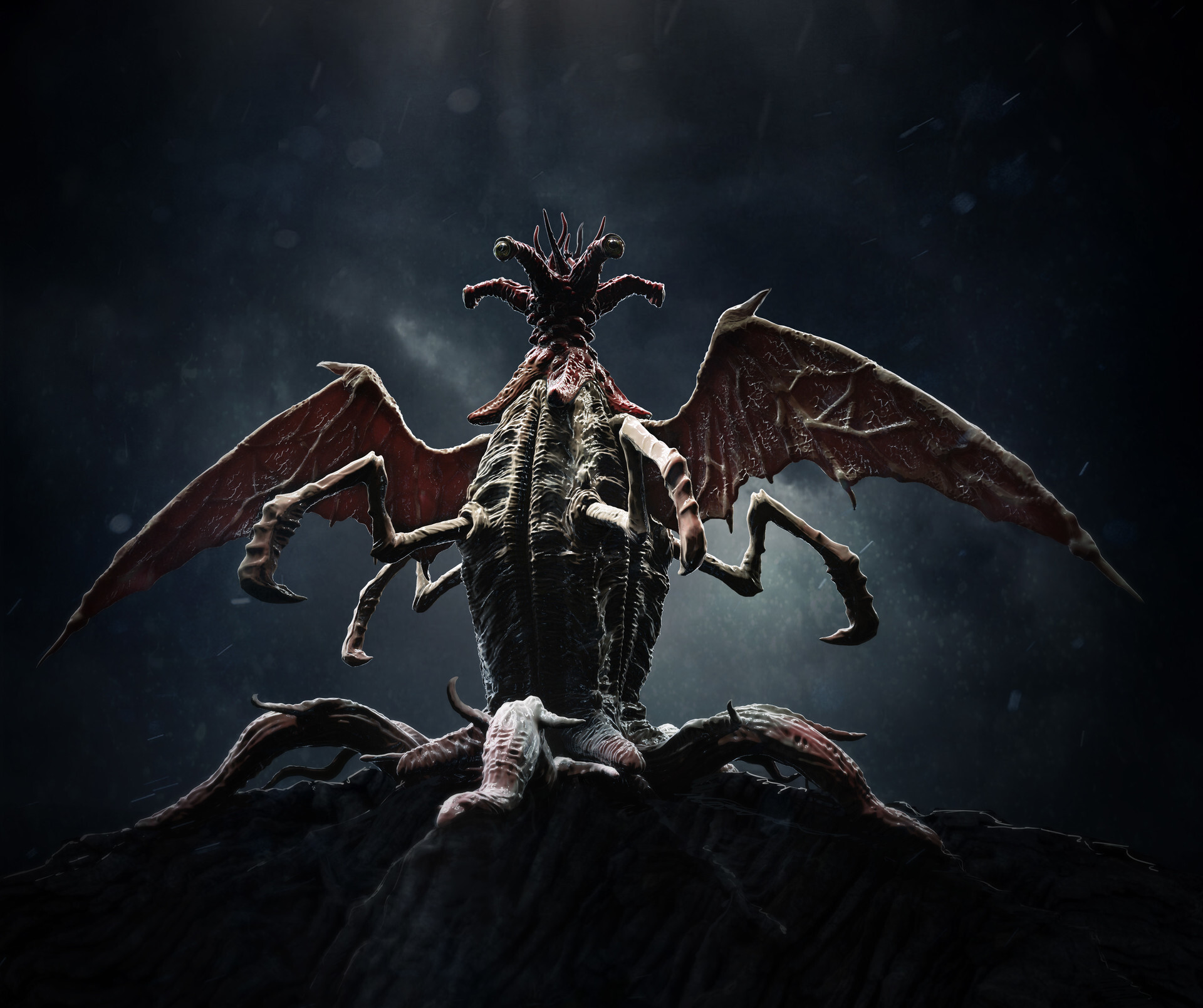this post was submitted on 11 Sep 2023
2 points (100.0% liked)
H.P. Lovecraft
4 readers
1 users here now
Community for fans of Lovecraft and Cthulhu mythos.
founded 2 years ago
MODERATORS
you are viewing a single comment's thread
view the rest of the comments
view the rest of the comments

Chapter VII concerns Dyer's interpretation of the colonisation of Earth by the Elder Things, and their subsequent wars with later colonisers.
The bas-reliefs of the building depicts the Elder Things as flying to Earth without the aid of a vessel. Though affected by extreme weather, they apparently survived the vacuum of space by imbibing herbal preparations. Their curious bodies make them masters of land, air, and sea, thus they established many land and sea cities.
In the deep sea the Elder Things fashioned from inorganic material their ancient slave race of the Shoggoths, which were previously believed to never reside upon Earth. The Elder Things commanded the Shoggoths via psychic manipulation. The Shoggoths eventually developed some manner of independent thought as a side effect of excessive mental manipulation by the Elder Things; this prompted a war of subjugation which was eventually won by the Elder Things. Around the time that the Elder Things created the Shoggoths, they also produced early Earth life. Rather than the deliberate genetic manipulation applied to Shoggoths, the Elder Things were content with allowing other life to develop naturally, only interfering when a certain species potentially posed a threat. This was the age of the Elder Things on Earth.
The next great colonising force was the Star Spawn of Cthulhu, a race of bipedal reptilians with tentacled faces, reminiscent of Dread Cthulhu though much smaller. The Star Spawn waged war against the Elder Things for dominion over Earth. The war eventually ended in a peace deal, where the Elder Things retained all their ancestral land, and with new unsettled land going to the Star Spawn. Eventually, an apocalyptic event struck the Star Spawn, as worldwide their cities sunk to the bottom of the ocean, including their capital of R'lyeh.
The third colonising force was the Mi-Go from Pluto, also known as the abominable snowmen of the Himalayas. These two waged war against the Elder Things and proved the stronger force, eventually forcing the Elder Things back to their underwater cities and their sole remaining land city in Antarctica, where they first landed on Earth. The Elder Things attempted to use their powers of space travel and biological engineering to assert dominance over the Mi-Go, only to discover that their technological knowledge had decayed and was lost to them.
Like the previous chapter, Chapter VII does a lot of work to establish some form of plausible sci-fi explanation for the weird creatures on Earth, rather than leaving origins unexplained and open to supernatural interpretation. He puts a nail in the coffin for Cthulhu here by explicitly stating that R'lyeh was deliberately built by a spacefaring culture who resemble Dread Cthulhu.
Of note from this chapter was the descriptions of the Mi-Go and Star Spawn relative to the Elder Things. While the Elder Things had fixed forms, the Mi-Go and Star Spawn appear more plastic in nature, capable of altering their forms to suit their needs. This again is explained away as the Elder Things originating from a point in space-time not unlike our own, while the other two races originate from some deep and distant abyss where our conventional knowledge of the sciences need not apply.